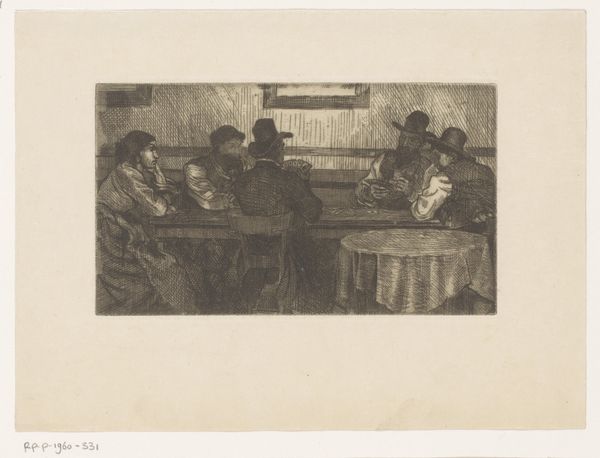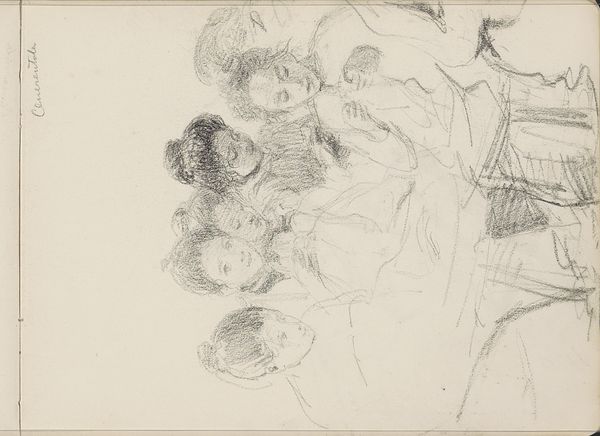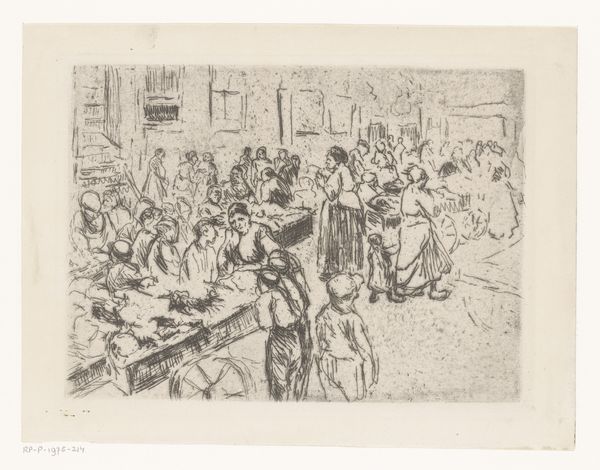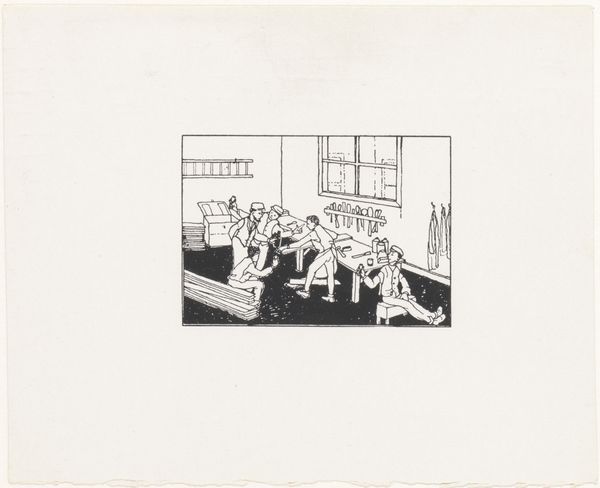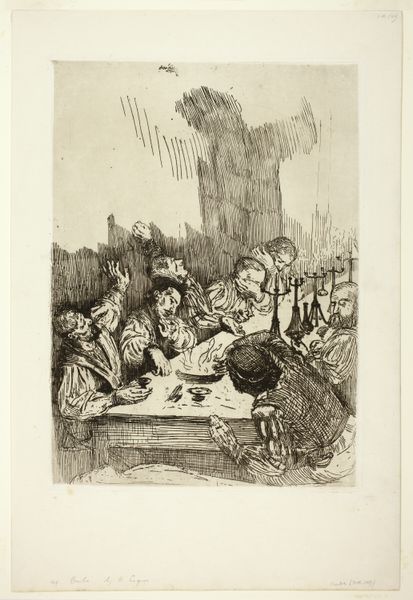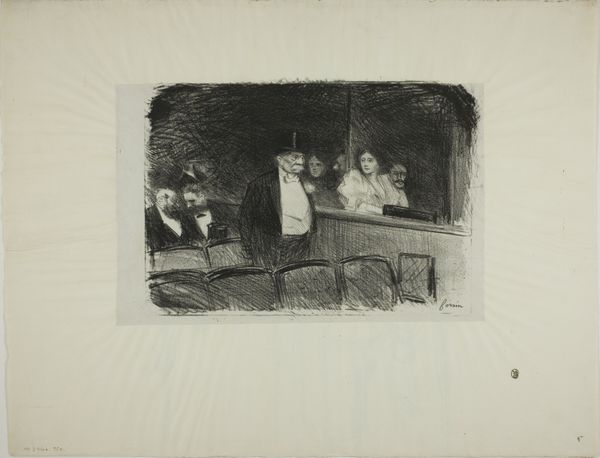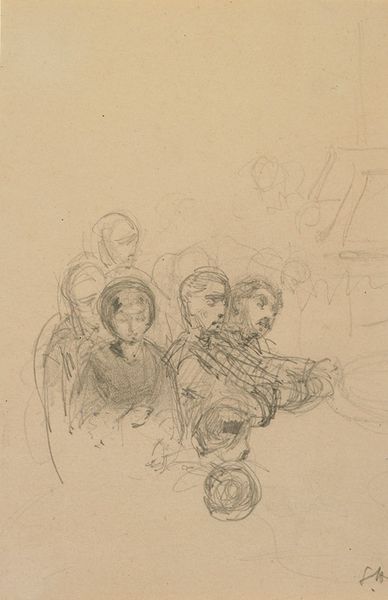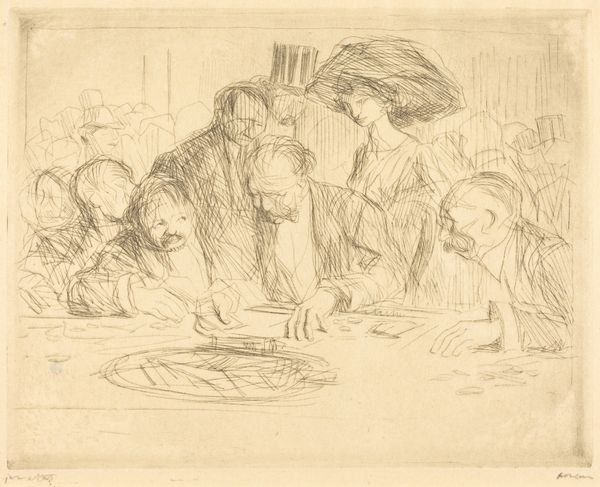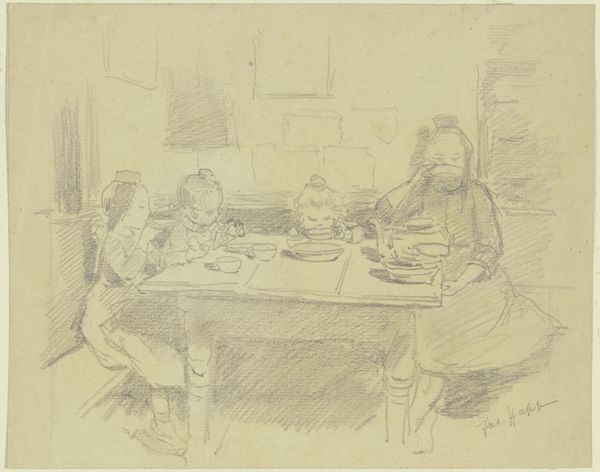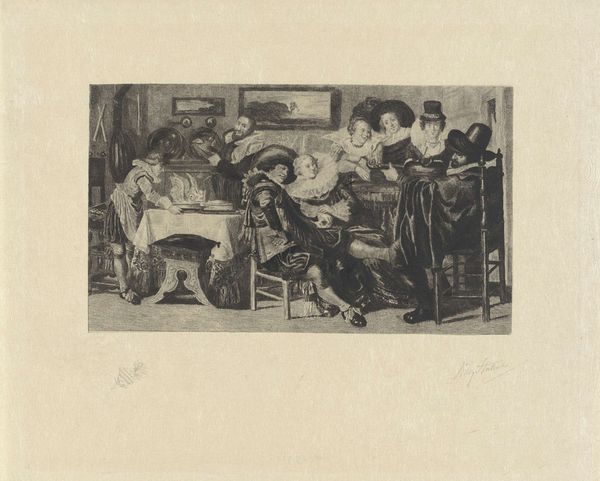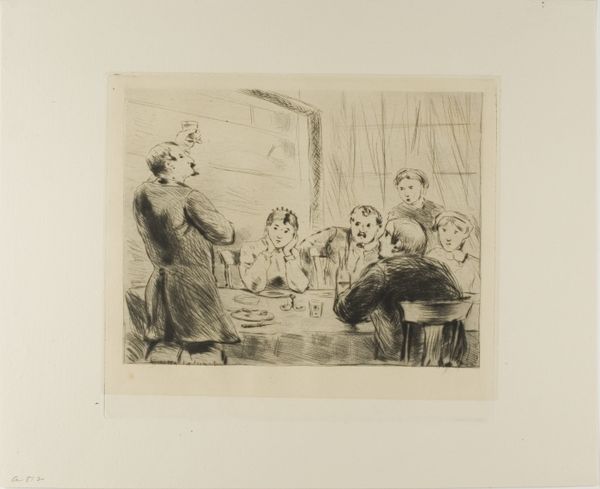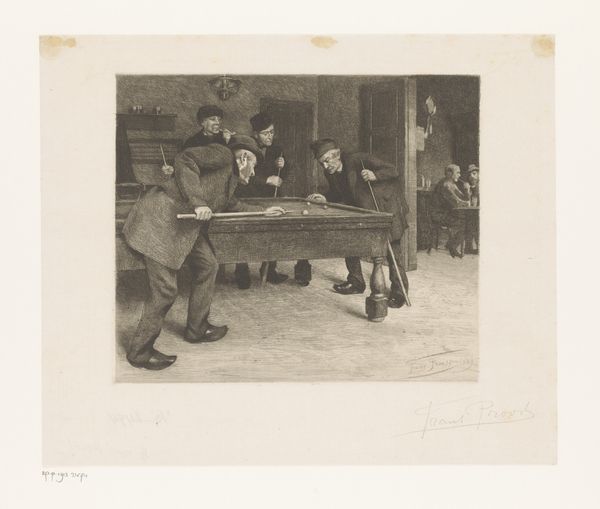
drawing, pencil
#
portrait
#
drawing
#
pencil sketch
#
pencil
#
genre-painting
Dimensions: height 324 mm, width 408 mm
Copyright: Rijks Museum: Open Domain
Curator: Carel Adolph Lion Cachet created this pencil drawing, titled "Schoolklas," sometime between 1874 and 1945. It now resides here at the Rijksmuseum. Editor: My first thought is one of somber introspection. Even though it’s a classroom full of children, there’s a muted, almost melancholic tone that the pencil work brings out. Curator: Indeed, though a seemingly simple genre scene, the context of its creation period raises some questions. Education became increasingly compulsory across Europe during that time. Do you read this image as commentary on the changing role of childhood? Editor: The children's posture definitely speaks volumes. They're presented as subdued and formally posed. Is it the dawn of enforced discipline that their faces are mirroring? I also wonder, does the upward gaze—so many looking upwards—imply a looking toward knowledge, aspiration? Is Cachet using the classroom as a symbol of society's molding influence? Curator: Precisely. Cachet came from a family of ministers, which predisposed him to think about the social roles of people within social systems. Genre painting, as a style, evolved to explore new and different subject matter relevant to different groups of people as social structures evolved. Given this, Cachet certainly wasn't interested in simple, illustrative genre paintings. The muted gray palette emphasizes the gravity and stoicism expected of these children in what was a fairly recent system. Editor: The repetitive lines of the desks draw our eyes in an artificial cadence, as if designed to lull, lull… There’s a beautiful constraint that comes across; even those that fidget remain in their designated parameters. Is it the price for upward mobility through structured education, a controlled imagination? Curator: That tension you mention, between discipline and aspiration, really gets at the heart of the evolving relationship between the individual and the collective good. There were growing ideas around the responsibilities a government has towards its citizens during this era. Educational access, in particular, grew from being a status symbol into a required obligation for future success. Editor: Absolutely. I see in this drawing more than a fleeting school moment; rather, Cachet renders childhood and future hopes weighed against expectations of an emerging social design. Curator: And it becomes fascinating when looking at it that way, isn't it? To realize it captured society at an important juncture, and, how very prescient in some ways. Editor: Yes. Something as common as a classroom sketch ends up having an unusually deep symbolic dimension that’s still very relevant today.
Comments
No comments
Be the first to comment and join the conversation on the ultimate creative platform.
